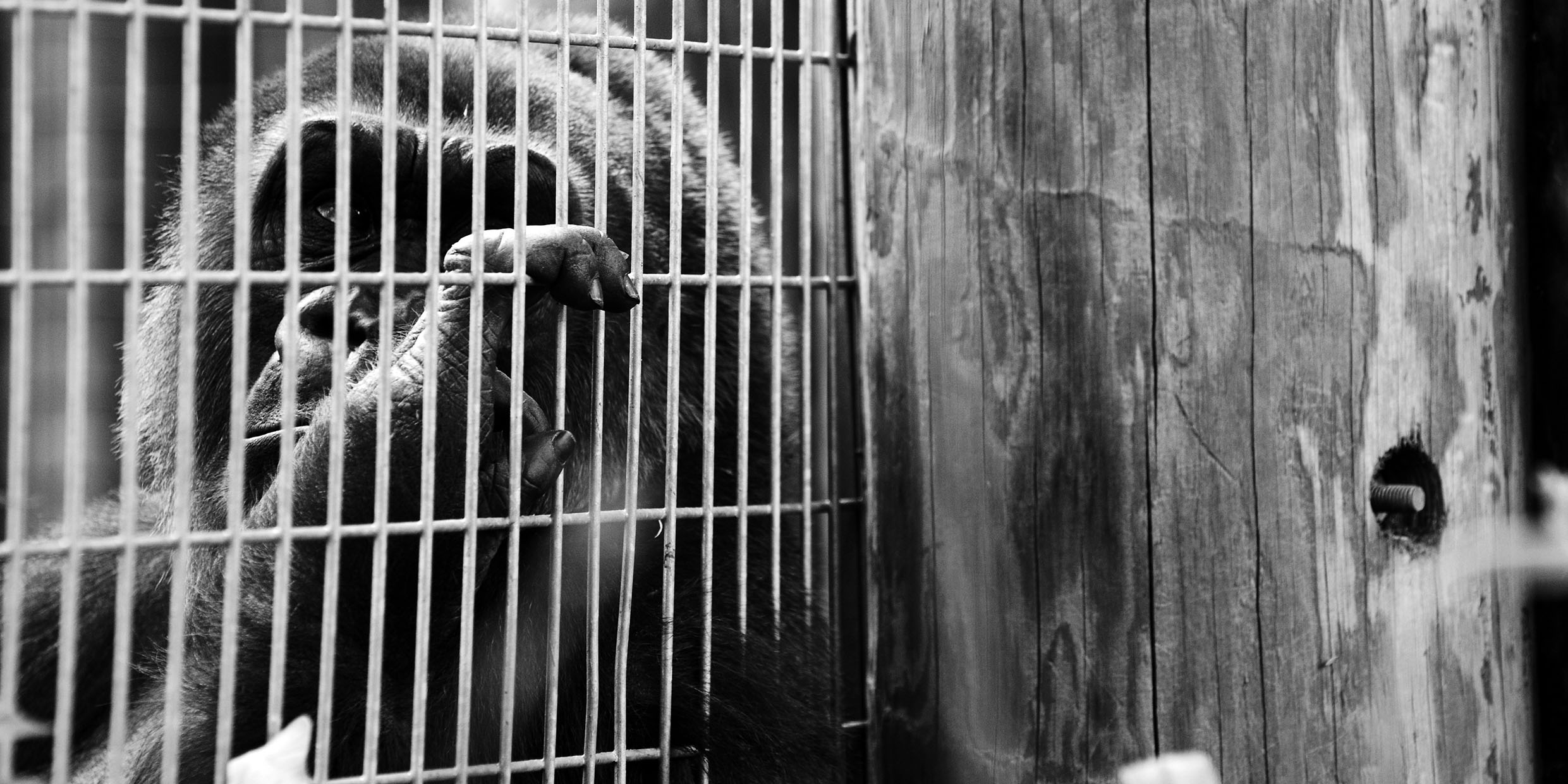Originally published 20 November 1989
Twenty-five years ago I took my kids to Boston’s Franklin Park Zoo. I swore I’d never return.
The kids loved the zoo, but I thought the animals looked unfree, unhappy, and uncared-for. They paced their squalid cages, or huddled miserably in tiny glass enclosures. I kept my misgivings to myself, but I never went back.
Until now. The zoo’s recently-opened [in September 1989] African Tropical Forest pavilion attracted me again to Franklin Park. This is an animal exhibit that Boston can be proud of. The animals are sleek and cared-for. Their environments are clean, spacious, natural-looking, and apparently stimulating for the beasts. Not bars, but open moats and clean plate glass separate the animals from the onlookers.
Still, some part of me felt sorry for the animals, especially the gorillas, so humanlike in their activities. Recorded sounds of rumbling jungle thunder and lots of real plants and running water doesn’t quite add up to living free. It was an occasion to reflect on what zoos are all about.
Hero of yesteryear
I grew up in a generation of American boys who idolized Frank “Bring ‘Em Back Alive” Buck, the 20th century’s most flamboyant live animal dealer. Buck’s clients included many of America’s zoos, and he supplied them with elephants, tigers, leopards, apes, monkeys, exotic birds, and every other type of beast imaginable. His base was Singapore, and his hunting grounds the tropical forests of Southeast Asia.
Buck’s autobiography was in my father’s library, and the great white hunter stared fearlessly out from the frontispiece photograph — handsome, steely-eyed, macho, and courageous. This guy could be charged by an enraged rhino or entwined by a 30-foot python and never flinch. A true boy’s hero — of yesteryear.
By the time my own children started reading, there were new zoologist heroes — and heroines! Joy Adamson, Jane Goodall, Dian Fossey. And the book titles were different: Bring ‘Em Back Alive was replaced by Living Free and Gorillas in the Mist. Clearly, a change had occurred in public attitudes about animals in captivity and in the wild.
Following my visit to Franklin Park’s new pavilion, I looked again at Frank Buck’s book. Somehow, the dashing adventurer of my boyhood was diminished. No longer a hero, but a zoological imperialist who never doubted that the wild beasts of Southeast Asia had no better fate than a cage in a Western zoo. Nothing motivates animals more than fear, wrote Buck, and like the other assorted agents of empire who hung about the bar of Singapore’s Raffles Hotel, he knew how to use fear to bring his quarry to heel.
But give Frank Buck this: While his friends entertained themselves by blasting away at wild beasts with elephant guns, he brought ’em back alive. Alas, Buck’s animals were saved from the trophy room wall only to spend their lives confined in the grim cages of our nation’s zoos.
A new emphasis
Now, all that is changed. Zoos are no longer interested in merely collecting animals for display. Their new agendas emphasize education, breeding, and conservation. No contemporary zoo of any stature will display a rare or vulnerable animal unless it intends to promote an increase in that species’ population.
So how should we feel about the gorillas, leopards, pygmy hippos, and other animals on display at the African Tropical Forest? Is their fate a sorry remnant of Western zoological imperialism? Or might the educational value of well-run zoos be the last best hope of animals in the wild?
The rampant destruction of tropical forests by developing nations is a far greater threat to the survival of wild animals than Frank Buck and all his trophy-seeking kind. Every 18 months the world loses an area of tropical forest equal to the size of New England. In the last 100 years, 85 percent of the habitat of the lowland gorilla has been destroyed by logging and farming. I learned these melancholy facts at the new tropical forest pavilion, and was encouraged, by a dozen exhibits and displays, to think deeply about their significance.
It is too simple to blame the developing nations; they labor under economic pressures that are largely dictated in the West. As long as wealth and conspicuous consumption count for more than zoological diversity, gorillas, leopards, and pygmy hippos face extinction. Enlightened zoological exhibits like Boston’s African Tropical Forest can play an important role in educating public values toward conservation and preservation.
I greatly admired the new pavilion, but my old misgivings about animals in cages hadn’t completely faded. I was particularly distressed to watch a gorilla snacking on glazing putty that it extracted from a window casement with a short, sharp stick. The attractiveness of the surroundings did not quite obviate the essential sadness of captivity.
But I did see hope for the animals in the eyes of children, as they hung upon the rails of moats or pressed their noses against glass. How could they not feel affection for the bongo antelope in its pin-stripe suit, the Nile monitor lizard with skin like fine Indian beadwork, or the De Brazza’s monkeys with grandpa beards? These beautiful animals must be saved and zoos can show the way.



